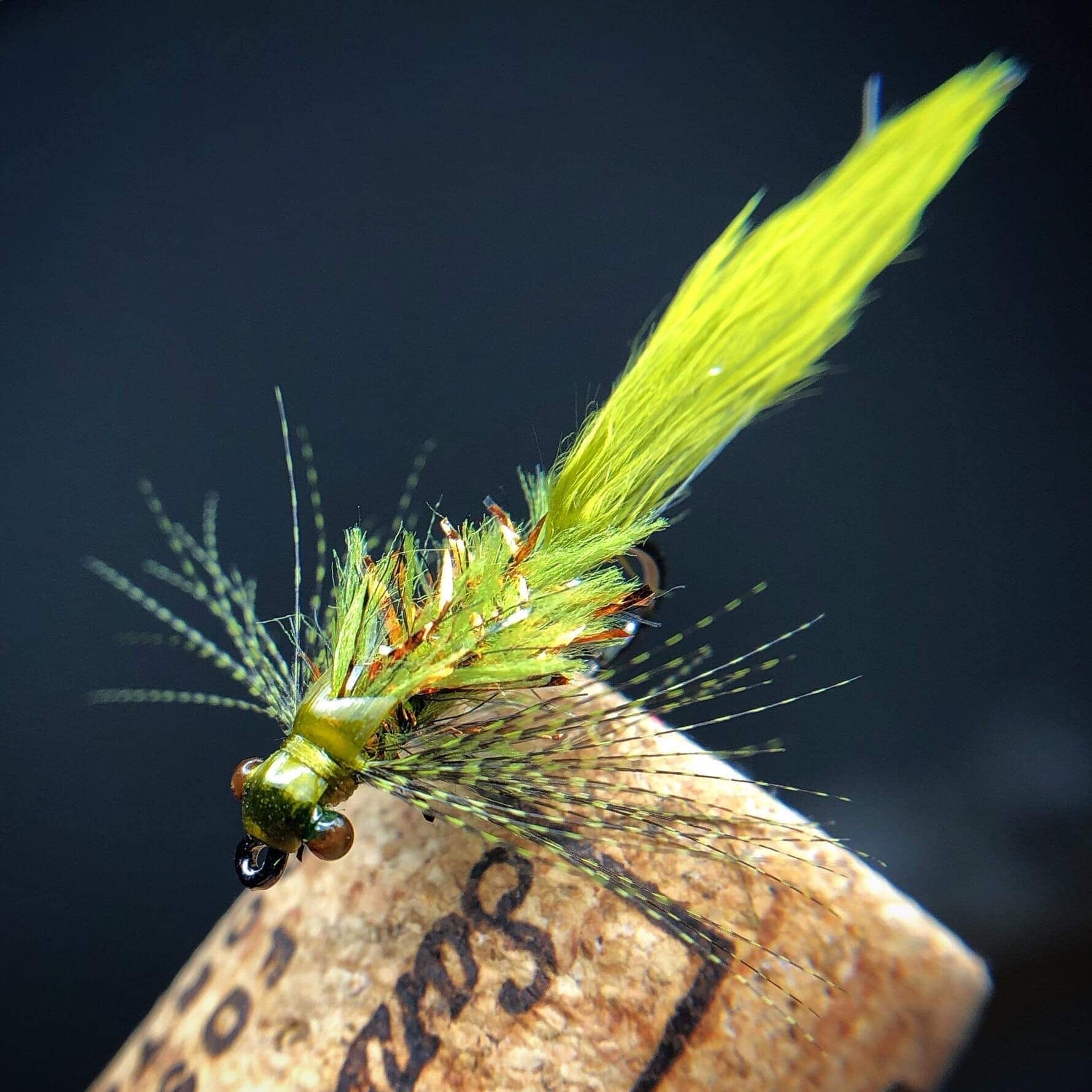
Damsels in Distress - Fly Fishing Damsel Nymphs Through the Seasons (Stanton Jack Guest Blog)
New to Upavon? Use discount code WELCOME10 or click this link to get 10% off your first order at www.upavonflyfishing.co.uk
Upavon consultant and talented fly tyer Stanton Jack describes his experiences fishing for naturalised Rainbow Trout with imitative Damselfly nymphs in the lakes of British Columbia, Canada. The key to his success? Understanding the insect life cycle and adapting to the seasons.
Damselfly nymphs are a favourite amongst stillwater anglers and fly tying enthusiasts around the world. With their distinct features such as pronounced eyes, long spindly legs and side to side abdomen movement these fantastic creatures make for some excellent fly tying patterns. Belonging to the insect order "Odonata", there are over 650 different species of Damselflies worldwide. The longest part of a Damselfly's life cycle is their nymph stage, where they feed and grow in the weeds until full maturity. It's in this stage that they are most susceptible to prey from foraging trout. As stillwater anglers understanding the characteristics of the Damselfly's nymphal stage in regards to size, colour, and anatomical features as well as their behavioural patterns can greatly increase our success on the water.
Early Spring
Here in British Columbia, many of our productive stillwaters freeze over the Winter. By late March and early April, lakes become ice free and the anticipation to get back on the water and feel the tug from a healthy trout cannot be underestimated. At this time there are very few hatches happening. Majority of the fishing is done in shallow water of 8ft or less. Here we find trout foraging through the weeds and top of shoals feeding on smaller food items such as immature damselflies. These immature nymphs are much smaller in size and generally have a very light olive, brown, or sometimes ginger colour. In the light they have a semi-transparent appearance. Their anatomical features are less developed with smaller eyes, legs, and less prominent abdomen and thorax. Light olive marabou or mallard flank make excellent legs, body, and abdomen sections for fly patterns. With trout holding in shallow water feeding on these immature Damsels, a slow intermediate sink line with slow hand twist, or fly suspended under an indicator can be an excellent presentation.

Immature Damsel Nymph
Late Spring/Early Summer
At this time the stillwater season is now well under way. The big chironomid hatches have occurred (an absolute favourite among B.C. fly fishermen), and anglers have most likely experienced some success fishing nymph patterns. This time for many is "prime time" fishing. On any given day an angler can experience multiple hatches from chironomids, mayflies, early sedges, and you guessed it... Damselflies. These Damselfly nymphs have now matured and ready to begin their migration to the reeds where they will emerge from the water hatching into adults and taking flight. During this migration one can see these larger 25-35mm nymphs swimming just below the surface wiggling their abdomen section side to side. At times large numbers can be migrating at once creating an absolute trout feeding frenzy! These Damselfly nymphs have more developed features such as large compound eyes, long segmented abdomen section, and thorax with distinct wing sheets. Appearance is a darker olive or olive/brown colour. Presentation varies from an intermediate stripped slowly to a type 3 line stripped fast and sporadically. If you're lucky enough to catch one of the feeding frenzies mentioned above, the latter of the two presentations can make for some exhilarating fishing!


Fall
With the lake hatches well behind us as well as the Summer heat, fish are now adjusting to the cooler water temps moving back to the shallows where they will load up on proteins for the long Winter ahead. This shallow water foraging is similar to the early Spring and immature damsel nymphs become a hot ticket food item once again. It should be noted that the larger damselfly nymphs can still work well as these fish are very opportunistic at this time and will not pass on the chance hit a big meal. From a fly tying perspective Damselfly nymph patterns generally take on a smaller size and have more range of natural colours with shades of olive being the most common. One can also put less attention to anatomical features as these Damselflies are similar to Spring nymphs and under developed. Scuds also become a very popular source of food, so tying patterns on smaller curved nymph, scud, or jig hooks and making patterns more suggestive of both food sources can be an excellent path to success. Presentations on a slow intermediate line twitched and stripped sporadically work well as do flies suspended under an indicator in the shallow water.

Understanding how Damselfly nymphs change in appearance in relation to different times of the season is key when creating our fly patterns. Having that knowledge as well as observing the behaviour characteristics of the insect on the water can help us dial in our presentations greatly improving our success rate. Hopefully this article helps you at the fly tying bench and on the water.

Tight lines, Stanton Jack Instagram | Facebook
New to Upavon? Use discount code WELCOME10 or click this link to get 10% off your first order at www.upavonflyfishing.co.uk
If you enjoyed this article you may also like Top Most Consistent Stillwater Flies.
Kommentare
Einen Kommentar hinterlassen